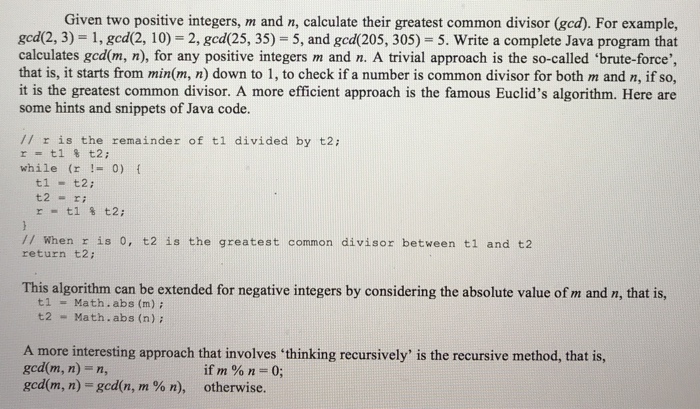Answered step by step
Verified Expert Solution
Question
1 Approved Answer
Given two positive integers, m and n, calculate their greatest common divisor (gcd). For example, gcd(2, 3)-1, ged(2, 10)-2, gcd(25, 35) 5, and ged(205, 305)

Step by Step Solution
There are 3 Steps involved in it
Step: 1

Get Instant Access to Expert-Tailored Solutions
See step-by-step solutions with expert insights and AI powered tools for academic success
Step: 2

Step: 3

Ace Your Homework with AI
Get the answers you need in no time with our AI-driven, step-by-step assistance
Get Started


